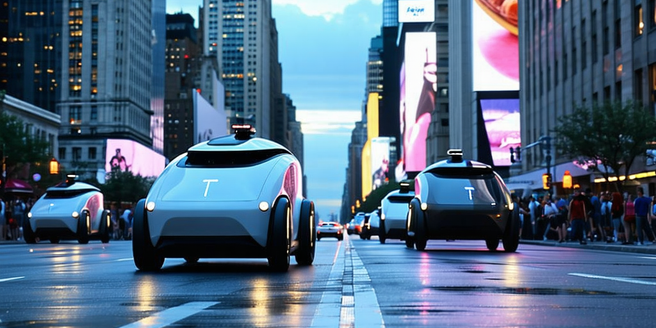
Drone Photography Accessories
Unlock the potential of aerial photography with the right equipment and knowledge. Selecting the best camera mounts and lenses for your drone is key to capturing stunning footage and images. Gimbal mounts offer stabilization for smooth videos, while wide-angle and zoom lenses provide flexibility and quality. Efficient battery management ensures longer flights, allowing more creative time in the sky. Secure your gear with protective cases to prevent damage and extend equipment longevity. Enhance your photos with filters, such as ND and polarizing options, to achieve professional results. Using remote controllers and signal boosters can improve connectivity, ensuring seamless operation during shoots. Invest in quality tools and maintenance for outstanding aerial photography experiences.

Haptic Technology Innovations
Haptic technology is transforming digital interaction by incorporating tactile feedback, enhancing user experience across devices like smartphones and VR systems. As the technology advances, its ability to simulate realistic touch sensations is improving, influencing fields such as user interface design and gaming. Recent innovations focus on precision and user experience, utilizing advanced materials and AI for real-time adaptation. Haptics significantly impacts virtual reality by adding tactile dimensions, making interactions more lifelike and benefiting training and educational applications. In healthcare, haptic feedback enhances surgical precision, training, and patient rehabilitation. However, challenges in developing robust haptic systems include simulating tactile sensations accurately and designing durable, energy-efficient devices. Despite these obstacles, haptics is poised to redefine user interaction with technology.

Standing Desk Transition Tips
Transitioning to a standing desk offers significant health benefits, such as reducing obesity and heart disease risks, improving posture, and increasing energy levels. Alternating between sitting and standing can minimize the hazards of a sedentary lifestyle, alleviate back pain, and enhance productivity and focus. To choose the right standing desk, consider your budget, workspace, adjustability, and ergonomics. Setting up a standing desk correctly involves ensuring the desk height allows for a 90-degree elbow angle and that the screen is at eye level, using a supportive mat, organizing your workspace for ease, and adjusting lighting to prevent glare. Maintaining correct posture is crucial; distribute weight evenly, keep feet shoulder-width apart, and ensure your monitor is at arm's length with the top at eye level. Be mindful of common challenges like leg discomfort and fatigue by using a cushioned mat, starting with short standing intervals, and making necessary ergonomic adjustments. Gradually adapt your body to standing and balance between sitting and standing for optimal health benefits.

Digital Detox And Mental Wellness
Explore the effects of screen time on mental health and learn how to identify and combat digital overload. Excessive screen use can lead to stress, anxiety, disrupted sleep, and impaired cognitive functions, making it crucial to balance productive screen use with breaks. Learn to recognize signs of digital overload, such as fatigue and reduced productivity, and take steps to set boundaries for a healthier relationship with technology. Discover strategies for a successful digital detox, including setting clear goals, creating screen-free zones, and involving family for accountability. Reduce screen time to boost emotional wellbeing, enhance mood, attention span, and sleep quality. Embrace face-to-face interactions and outdoor activities to counteract digital stress. Build a sustainable digital wellness routine by auditing screen habits, setting boundaries, and incorporating mindfulness, enhancing focus and productivity, while fostering personal and emotional growth.

Secure External Storage Solutions
External storage security is essential for protecting sensitive data from unauthorized access and ensuring data integrity. As data breaches become more frequent, it's important for organizations to regularly update their security protocols to prevent potential vulnerabilities associated with external storage devices. Understanding the threats such as theft, hacking, and data corruption is key to implementing effective security measures. When evaluating external storage options, consider different choices like hard disk drives, solid-state drives, and cloud storage, each with its own security features. Priority should be given to devices with encryption, password protection, and biometric authentication capabilities. Countering common security threats involves using physical locks, enabling encryption, installing antivirus software, and enforcing strict access controls. Organizations should adopt best practices like regularly updating security software, encrypting data, implementing multi-factor authentication, and conducting audits to ensure data protection. Educating users on security protocols enhances data protection efforts and helps maintain secure external storage.

Digital Twins In Workplace Planning
Digital twins revolutionize workplace planning by creating dynamic virtual models of physical environments, leveraging IoT, AI, and machine learning for real-time insights and optimization. They enable predictive maintenance, improve operational efficiency, and support innovative design scenarios to enhance employee productivity and comfort. By simulating layouts, digital twins optimize space usage, reduce energy consumption, and anticipate future needs. Despite integration challenges and data security concerns, digital twins represent a cost-effective, data-driven approach to workplace design that fosters proactive management. Future trends will see digital twins integrating with AR and VR, refining predictive analytics, and supporting hybrid work models, ensuring sustainable, efficient, and adaptable workplaces.

Biometrics In Security
Biometrics refers to the identification and authentication based on unique physical or behavioral traits, offering high security in areas such as banking, healthcare, and law enforcement. Common types include physiological biometrics like fingerprints and facial recognition, and behavioral biometrics like voice patterns and gait analysis. Benefits include enhanced security over traditional methods, convenience, and streamlined access control. Challenges include privacy concerns, technical limitations, and high implementation costs. Advances involve AI and machine learning, leading to improved accuracy and contactless solutions. Future trends highlight integration with technologies like blockchain and IoT, enhancing security and expanding applications.

Autonomous Vehicles And Urban Mobility
Autonomous vehicles, or self-driving cars, are set to revolutionize transportation by improving safety, efficiency, and accessibility. These vehicles utilize advanced technologies like sensors and AI to navigate without human intervention, reducing human error and transforming urban mobility. The shift from traditional to autonomous vehicles involves extensive testing, regulatory adaptations, and public acceptance. As cities grow, urban mobility is diversifying with shared services and sustainable transport options, optimizing traffic and connectivity. Self-driving technology offers benefits such as decreased accidents, reduced congestion, and increased accessibility for the elderly and disabled. However, challenges remain in ensuring safety, cybersecurity, public trust, and regulatory clarity. Autonomous systems are expected to reshape public transportation, enhancing last-mile connectivity and efficiency. Overall, the progress in autonomous vehicle technology promises to reshape how we commute and interact with urban environments.

Bluetooth Speakers: Jbl Vs. Bose
Discover the key differences between JBL and Bose Bluetooth speakers in terms of design, sound performance, battery life, connectivity, and pricing. JBL is known for crafting rugged, durable speakers ideal for outdoor use, providing powerful bass and dynamic sound perfect for energetic environments. Bose, on the other hand, offers sleek, sophisticated designs with a focus on clarity and balanced sound, appealing to those who prioritize vocal and instrumental precision. Both brands offer practical portability and advanced features, although JBL tends to be more budget-friendly while Bose offers a premium audio experience at a higher price point. Choose JBL for affordability and ruggedness, or opt for Bose if you seek elegance and superior sound fidelity.

Digital Collaboration Tools
Digital collaboration tools are essential for modern productivity, enabling real-time teamwork across distances and promoting efficiency. These tools encompass a range of applications like video conferencing, file sharing, and project management software, crucial for remote work success. They support flexible work environments, inclusivity, and teamwork, giving businesses a competitive edge. Collaboration software specifically enhances communication, organization, and task transparency, leading to faster decision-making and agility. Popular platforms such as Microsoft Teams, Slack, Asana, and Zoom offer unique features to meet diverse business needs. Key considerations when selecting tools include ease of use, integration, security, and scalability. Despite their benefits, challenges like learning curves and connectivity issues must be addressed through training and support for effective digital collaboration.

Wearable Fitness Tech
Wearable technology in fitness is transforming health and exercise experiences, with devices like smartwatches and fitness bracelets providing real-time data on heart rate, steps, and calorie burn. These advancements in sensor technology are driving a shift towards preventive health strategies. Key features to consider when choosing a fitness wearable include accurate tracking, battery life, smartphone compatibility, water resistance, and a user-friendly interface. This technology enhances workout routines by offering personalized feedback and integrating with health apps for holistic fitness tracking. Leading brands such as Fitbit, Garmin, and Apple Watch offer diverse features catering to various needs. Future trends in wearable fitness technology include AI integration for personalized insights, advanced biometric sensing, and augmented reality features, highlighting the evolving role of wearables in health management.

5g Technology
5G technology represents the next evolution in mobile networks, offering faster data speeds, lower latency, and enhanced connectivity. Building on previous generations, it utilizes advanced antenna technology and wider bandwidths to provide seamless experiences. 5G is set to revolutionize industries by enabling applications like autonomous vehicles, remote healthcare, and smart cities. Key features include higher speeds, real-time communication capabilities, and support for a higher density of connected devices, making it ideal for the Internet of Things. These features differentiate 5G from earlier generations, offering transformative changes in connectivity. However, the deployment of 5G poses challenges, including infrastructure investment, security concerns, and spectrum management. As countries roll out 5G infrastructure, understanding its impact on industries like manufacturing, healthcare, and education becomes critical. The future of 5G promises exciting developments, with researchers exploring 6G for even faster speeds and improved connectivity, transforming society and enhancing quality of life globally.